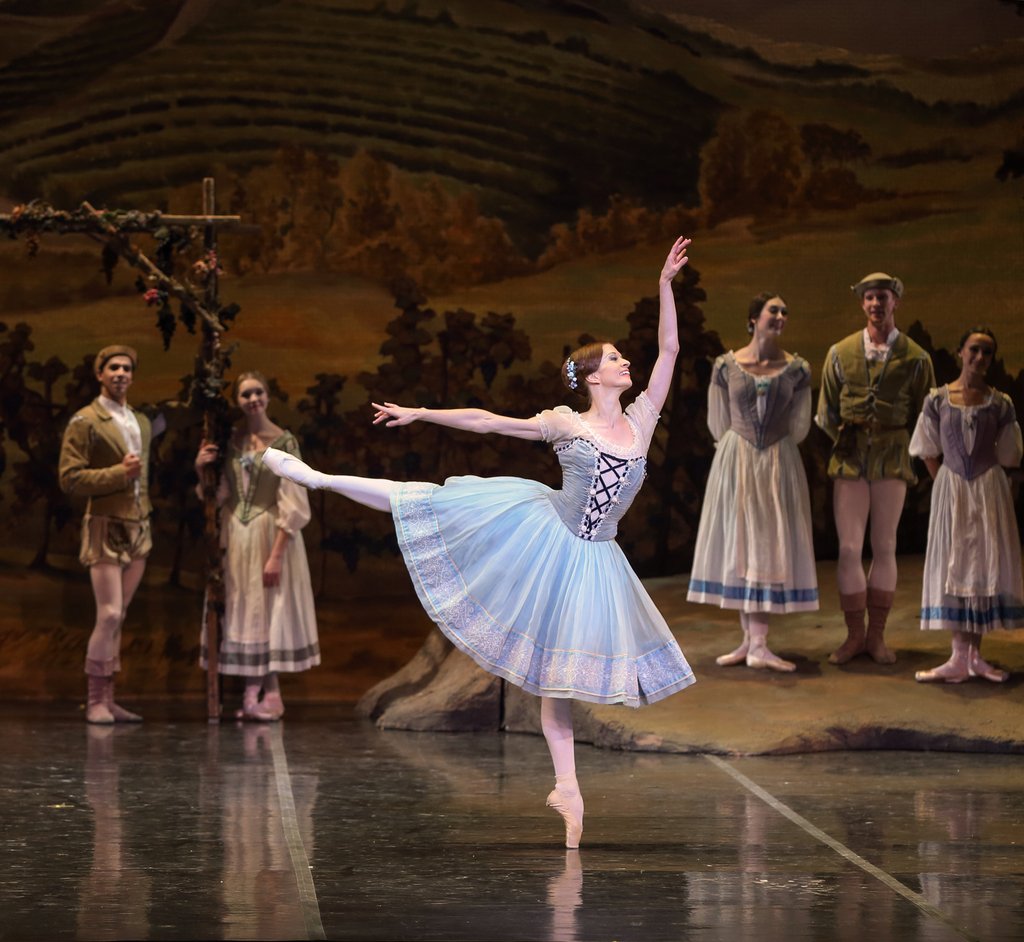 “Dreams do come true.” It’s the kind of promising tagline that immediately calls to mind fairy tales and happy endings, princes and princesses, glass slippers and magical castles, and pretty much everything Disney. But it’s also a fitting description for Colorado Ballet, one of the state’s oldest and most successful art institutions now celebrating its 53rd year of world class dance.
“Dreams do come true.” It’s the kind of promising tagline that immediately calls to mind fairy tales and happy endings, princes and princesses, glass slippers and magical castles, and pretty much everything Disney. But it’s also a fitting description for Colorado Ballet, one of the state’s oldest and most successful art institutions now celebrating its 53rd year of world class dance.
Originally conceived as a ballet school in 1951 by Denver natives Freidann Parker and Lillian Covillo, Colorado Ballet came together more or less over practicality.
“Our dream, at the time,” said Covillo, “was to have a company that was professional, so the dancers we were training didn’t have to go to other cities to find jobs…Never in our wildest dreams did we think we would see the day that Colorado Ballet would achieve such artistic success.”
In 1961, ten years after it began, the Company started the Colorado Concert Ballet as a showcase for its students and presented its first production of The Nutcracker, now an annual Colorado tradition. By the late 70s, the organization had doubled in size, earned its professional status, and by the early 90’s, secured financial independence.
Then, in 2006, it hired Gil Boggs as Artistic Director, a former American Ballet Theatre principal, whose illustrious career took him to the world stage and alongside such elite performers and choreographers as Mikhael Baryshnokov, Rudolf Nureyev, Twyla Tharp, Agnes de Mille, and Sir Kenneth MacMillan.
Since joining the Company, Boggs has continued to expand its capabilities with his expertise and direction. He’s brought in familiar full length productions of Swan Lake, Don Quixote, The Sleeping Beauty, and most recently, Giselle. He’s staged new productions of Romeo & Juliet, Beauty and the Beast, and Peter Pan, delivered 14 world premieres, and presented 12 Colorado Ballet premieres.
Says Boggs, “I like to keep the company very diverse so that we can appeal to many different types of tastes in the dance world – something that I feel is very important.”
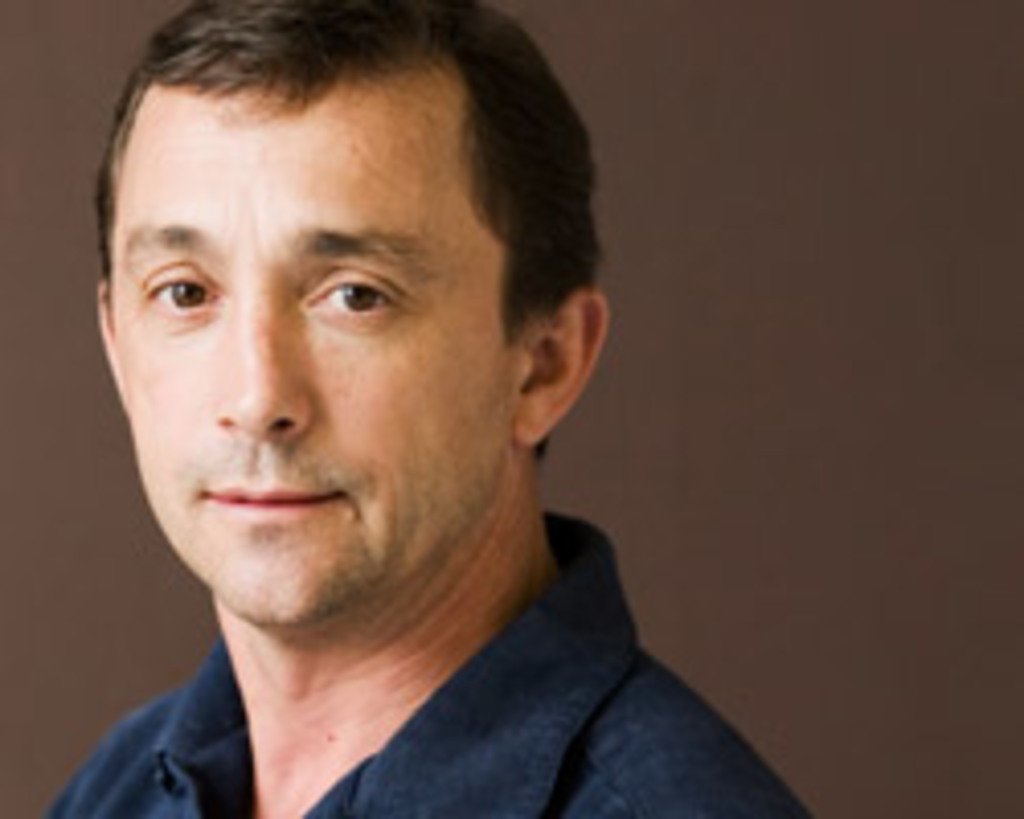 Today, with 30 of the finest dancers from around the globe, a studio company of 15-20 up and comers, a much bigger budget, a wonderful series of training and educational programs to spread the joy of dance with the community, and a brand new state-of-the-art facility scheduled for 2014, Colorado Ballet continues to evolve and grow as a world class dance institution.
Today, with 30 of the finest dancers from around the globe, a studio company of 15-20 up and comers, a much bigger budget, a wonderful series of training and educational programs to spread the joy of dance with the community, and a brand new state-of-the-art facility scheduled for 2014, Colorado Ballet continues to evolve and grow as a world class dance institution.
Following a spectacular performance of Giselle, one of the most popular classical ballets that hauntingly flirts with love, death, and forgiveness, the 2013-14 season continues with The Nutcracker (Nov. 30–Dec. 28), Cinderella (Feb. 14–23), and Director’s Choice (March 28-30), a series of contemporary, innovative works: Traveling Alone, Feast of the Gods, and a special world premiere.
With the glass slipper firmly in place, we sat down with Gil Boggs to discuss his career and influence on Colorado Ballet, the excitement around the current season, and the evolution of a dream.
For tickets to the 2013-14 Colorado Ballet season, visit coloradoballet.org.
Your career as a dancer began with the Atlanta Ballet. What attracted you to the world of dance?
I was actually born in Pensacola, Florida. My father was a pilot in the marine corp. So, I traveled every year as a military brat from state to state. We ended up in Atlanta with my mother’s family. Actually, a little town south of Atlanta called Stockbridge.
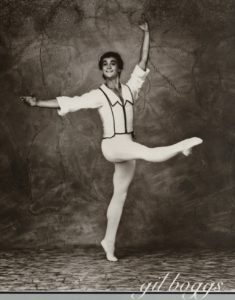 My sister was taking ballet classes and her school was doing an end of the year recital. My best friend at the time, Ken Butcher, never told me he was going to be in the performance. And I just happened to be there and saw him up on stage. I thought it looked really interesting and told my mom, ‘I wanna do ballet next year!’ So, I was a 10 year old in 1970 in South Georgia who wanted to do ballet. Let’s just say it was a defining moment!
My sister was taking ballet classes and her school was doing an end of the year recital. My best friend at the time, Ken Butcher, never told me he was going to be in the performance. And I just happened to be there and saw him up on stage. I thought it looked really interesting and told my mom, ‘I wanna do ballet next year!’ So, I was a 10 year old in 1970 in South Georgia who wanted to do ballet. Let’s just say it was a defining moment!
Speaking of defining moments, you’re now in your eighth season with the Colorado Ballet. How did you make the transition from dancer to artistic director? Was there an apprenticeship or was it trial by fire?
Well, I retired in 1999 and ended up at a sporting complex in New York City called Chelsea Piers. I was doing events at a golf club. I loved golf, loved playing it, and thought I wanted to be a golf pro. But I would often get into arguments with people about their golf swing (laughs). So, I took an events position and ran special events for people on Wall Street, who would rent out golf pros and rooms and have food and entertainment and so forth.
A while later, the directorship of the golf academy opened up and I was offered that position. Before I knew it, I was responsible for 14 golf professionals, a staff of 12, and a $2 million budget. And that became my education as far as managing people and running a business. I was there for six years before Colorado Ballet called. And when they called, I had the utmost confidence that I knew how to manage people and become a director.
How would you describe your artistic vision? And has it changed from when you first joined?
It hasn’t really changed that much. Each year I want to present at least one full length ballet – a very opulent piece with large sets and lots of people on stage, i.e. Swan Lake, Sleeping Beauty, Giselle, etc. People love those works and I want to bring them to the community because there’s an audience for them and we’re a large enough company to be able to do them. But I also like to present one or two contemporary works each year as well. I like to keep the company very diverse so that we can appeal to many different types of tastes in the dance world – something that I feel is very important.
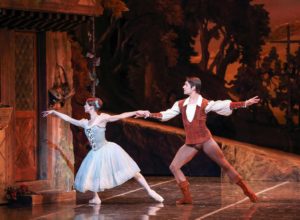 What makes Giselle your personal favorite?
What makes Giselle your personal favorite?
It’s all about the characters and the story – the story of Giselle and who she is, the characters of Albrecht and Hilarion (the guy who is in love with her), and Myrtha, Queen of the Wilis, who emerges in the second act, holding the ultimate power. There’s as much acting in it as there is dancing. And watching the development of those characters during the course of the ballet is very exciting.
What does a day in the life of an Artistic Director look like?
I’m pretty much responsible for everything, from the moment you walk into the theater – the ballet that’s chosen, the dancers that are performing, the hiring and firing of the dancers, the rehearsals, etc.
There are many different versions of Giselle. And I choose the version that I feel is most appropriate; the one I want to put on stage. A day in the life involves a lot of rehearsal up in the studio with the dancers, lunches with potential donors, interviews such as this one, etc. (laughs). And then it also includes sitting down with the rest of the staff to assess where we are with ticket sales, promotions, etc. Pretty much anything that’s going on in the organization, I have a hand in.
Currently, you have 30 professional dancers in the troupe from all over the world – Russia, Cuba, Ireland, Japan, the United States, etc. What’s the audition process like each year? How competitive is it?
 The audition process involves auditions in New York City and at our studios here in Colorado. We host two open auditions that people can come in and sign up for. And then there’s also a process whereby dancers from all over the world can send me a DVD with a resume or something they’ve posted on YouTube and we’ll look at that.
The audition process involves auditions in New York City and at our studios here in Colorado. We host two open auditions that people can come in and sign up for. And then there’s also a process whereby dancers from all over the world can send me a DVD with a resume or something they’ve posted on YouTube and we’ll look at that.
In the end, I’m evaluating over 400 dancers each year for maybe 2 positions – that’s how competitive this business is.
I’m assuming it changes each year?
Yes, there are different characters in Giselle and I have to make sure I have the appropriate types of dancers that can do those characters. The Nutcracker is big for us and I have to make sure that I have a younger dancer who can play the role of Fritz but I also have a taller, more regal gentleman who can do the cavalier role and dance with the Sugar Plum Fairies. So, I have to look for dancers that match up to roles of the repertory that we’re performing.
And then there are the intangibles in terms of attitude, work ethic, and things like that. One of the best stories I love to tell is when I first got here and a gentleman auditioned for me who I was very interested in. But he said, “I have to be honest with you, I’ve danced with a lot of other companies and I’ve never gotten along with an artistic director.” And I said, “You’re hired.” It was a defining moment for him and I appreciated that. We had an understanding and I just knew he was going to walk in the building and give me everything he’s got.
Tell me a little about the Studio Company and the importance of training the next generation of great performers.
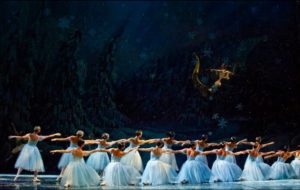 Our Studio Company is comprised of young dancers straight out of high school who are looking for a career in dance. And they perform along with the company. They rehearse with the company and supplement our corps de ballet in our large productions so we can have 27 swans on stage in Swan Lake. It’s a training program and they learn what it’s like to be a professional dancer.
Our Studio Company is comprised of young dancers straight out of high school who are looking for a career in dance. And they perform along with the company. They rehearse with the company and supplement our corps de ballet in our large productions so we can have 27 swans on stage in Swan Lake. It’s a training program and they learn what it’s like to be a professional dancer.
Each year, I’ve been able to bring one or two into the company. And if they’re not brought into Colorado Ballet, they’ve had the type of training where, after a couple of years, they can go out into the dance world with that seasoning behind them, and find work with another company. The experience they build up here will interest other artistic directors.
For those interested in a career in ballet, what words of wisdom would you impart?
It’s going to be one of the hardest things you ever do in your life, especially starting out. You’re not going to make any money. These dancers have a 33 week contract. They have 33 weeks of salary and then they’re scrambling for 4 months of the year to pay bills and find work elsewhere. So, you have to have an understanding of that. It’s the nature of the business. But in the end, when you find yourself up on stage, there’s nothing quite like it. You must treasure every moment that you’re up there because it’s fleeting.
Giselle is your favorite ballet. But what’s your favorite memory as a director?
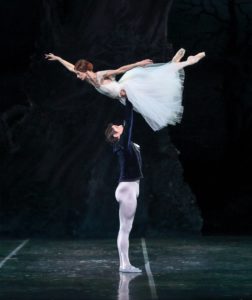 My favorite memories are always the ends of every performance when the dancers have brought it and the audience is on their feet. I live for those moments, knowing that the product on stage is a very good product.
My favorite memories are always the ends of every performance when the dancers have brought it and the audience is on their feet. I live for those moments, knowing that the product on stage is a very good product.
Are you able to enjoy the performances?
Funny you mention that. In my first year with the Colorado Ballet, we did Giselle. The program had already been chosen. I didn’t choose it, but I was very happy about it. So, I came in with a new staff, put the version in that I wanted, picked out the sets and costumes, rehearsed and rehearsed, and eventually, took it to the theater.
So, we get to opening night and I’m thinking, ‘This is going to be one of the greatest moments of my life. The company looks wonderful and we’re going to show Denver what a great product we have!’ But right after I sit down, all of a sudden, somebody slips. Somebody falls. Somebody is out of line. And it was at that point in time, I realized I’m never going to enjoy another performance again. I’m always going to see all of the mistakes – the curse of being an artistic director (laughs).
This season, you have a great mix of classical and contemporary ballets. What are you excited about and what can audiences look forward to?
I think it goes back to being a diverse company, a company where we can do Giselle and Nutcracker, but also bring in a brand new production of Cinderella that’s never been done before in Denver – something for the whole family.
The dancers’ favorite program, of course, is our contemporary program at the end of the season where we present three different works and they get to work with choreographers, where it’s just purely dance. The joy that comes out of those dancers during those performances is something to look forward to each season.
 In performing popular ballets like Giselle, The Nutcracker, Cinderella, etc., do you make any changes to keep things fresh and new? Or are you a traditionalist?
In performing popular ballets like Giselle, The Nutcracker, Cinderella, etc., do you make any changes to keep things fresh and new? Or are you a traditionalist?
Well, when it comes to the choreography and what you see on stage for a Swan Lake, I’m very adamant to say: ‘This is your grandmother’s Swan Lake.’ This is what she grew up with and I’m very much a traditionalist when it comes to that sort of thing.
That said, I do like to have a little bit of fun. So, if you’re watching closely, you’ll see some light moments that will make you smile or laugh, especially with The Nutcracker. It’s a very traditional Nutcracker that we do. But Mother Ginger can be entertaining at times. There’s a little hipness in there. And some of the parents in the background during the party scene might do something funny on the side. It’s like those Pixar films where they put a little something in for the adults. It’s very appropriate for the kids, but if the adults are watching closely, it’s entertaining for them too!
You’ve performed and worked with the best. What’s been your proudest moment as a dancer?
I’ve worked with so many great people and performers, but being on stage with Mikhail Baryshnikov was a dream come true. He was my idol. He’s the one who hired me into American Ballet Theatre. And working alongside him was one of the highlights of my career.
I was a principal dancer in a major ballet company throughout the world, danced in over 20 countries, and performed in so many different types of ballets – contemporary, modern, classical, etc. There was never really a dull moment in my career.
Mark Sells is a nationally recognized film/entertainment journalist and Critic-at-Large for 100.3 FM The Sound (Los Angeles). In addition to his blog on 303, you can follow The Reel Deal on YouTube, Twitter, and Facebook for the latest entertainment news, reviews, and interviews.
All images courtesy of: Terry Shapiro, American Ballet Theatre, & Colorado Ballet (www.coloradoballet.com)
The Nutcracker – Colorado Ballet
Cinderella – Colorado Ballet
Director’s Choice – Colorado Ballet





